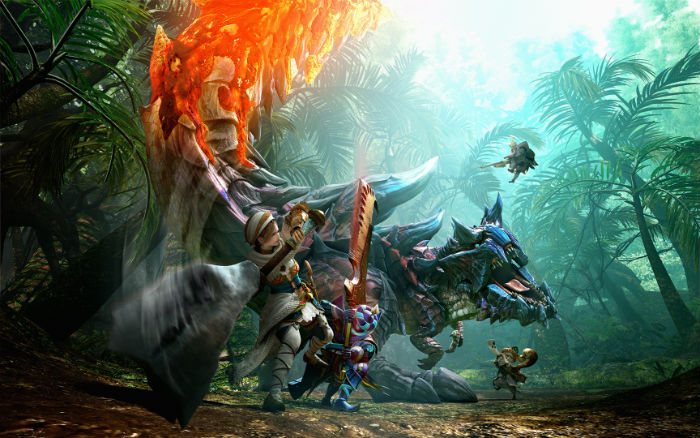
A monster celebration
After selling more than 36 million units worldwide, Capcom’s hugely popular Monster Hunter action role-playing game series is back for its third outing on Nintendo 3DS with Monster Hunter Generations. Known as Monster Hunter X (“Cross”) in Japan, this latest entry celebrates the franchise’s past ten years by blending new areas and monsters with returning fan-favourites, all presented with the latest generation of graphics and gameplay enhancements.
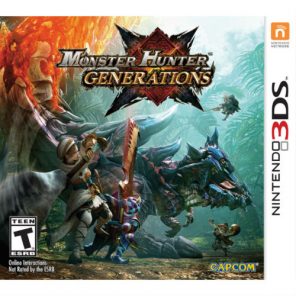 In the game, you’ll embark on an epic journey through familiar past locations, and never before seen regions in the Monster Hunter universe, rising up through the hunter ranks while defending villagers from the terrifying Fated Four—a group of newly introduced powerful flagship monsters. Along with 14 different weapon classes to choose between, ranging from long-time favourites like the Dual Blades and Gunlance, to recent additions like the Insect Glaive and Charge Blade, Monster Hunter Generations dramatically expands the gameplay with four unique “Hunting Styles” and visually striking new “Hunter Arts.” Combined, the hundreds of quests to take on, vast number of beasts to hunt, and huge array of items to collect and craft into new weapons and armour, make this is the most expansive Monster Hunter game yet.
In the game, you’ll embark on an epic journey through familiar past locations, and never before seen regions in the Monster Hunter universe, rising up through the hunter ranks while defending villagers from the terrifying Fated Four—a group of newly introduced powerful flagship monsters. Along with 14 different weapon classes to choose between, ranging from long-time favourites like the Dual Blades and Gunlance, to recent additions like the Insect Glaive and Charge Blade, Monster Hunter Generations dramatically expands the gameplay with four unique “Hunting Styles” and visually striking new “Hunter Arts.” Combined, the hundreds of quests to take on, vast number of beasts to hunt, and huge array of items to collect and craft into new weapons and armour, make this is the most expansive Monster Hunter game yet.
Game Details
Platform: Nintendo 3DS
Release Date: July 15, 2016
Developer: Capcom
Publisher: Capcom
Genre: Action role-playing game
Modes: Single-player, multiplayer
ESRB Rating: T (Teen, 13+)
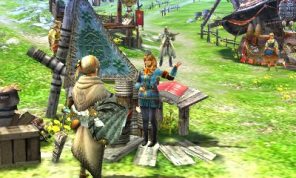 Welcome to Bherna, Hunter
Welcome to Bherna, Hunter
Monster Hunter Generations begins in the quaint, grassy countryside town of Bherna, home to a local Hunters Guild and plenty of talkative village shop owners eager to explain how they can aid in your hunting expeditions. If you’ve never played a Monster Hunter game before, make sure you take the time to chat up all the town folks to understand their services and get your bearings, as you’ll be revisiting this central hub area a lot of times over this easily 100+ hour adventure. Most of the town facilities will be well-known to Monster Hunter veterans, from the smithy who will forge or upgrade your equipment, to the market where you can buy useful items for quests, to the quest counter that offers a range of quests you can undertake.
It sounds simple, but like past Monster Hunter titles, learning the game systems still feels more obtuse than it ought to be. So, if you’ve coming into Monster Hunter Generations fresh, be prepared to spend some initial time learning the ins and outs of being a hunter. The great news is that like in Monster Hunter 4 Ultimate, there’s a wealth of practical tutorials you can take on, each one walking you through an active quest focusing on a specific weapon type or concept, and the topics are all explored in sufficient detail. You can easily spend 5-10 hours in these lessons alone, but since they’re purely optional, you can switch to regular quests at any time—or if you’re an experienced player, simply ignore them all together.
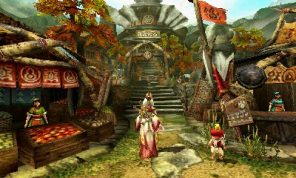 A-Questing we will go
A-Questing we will go
Like its predecessors, Monster Hunter Generations’ prime focus is on questing. Initially you’ll have access to easy 1 Star quests, ranging from simple gathering quests that require you to find items out in the wild, carrying quests that challenge you to transport fragile oversized animal eggs, slaying quests that pit you against beginner-level beasts, and capture quests that have the added complexity of trapping monsters alive. As you complete quests and rank up your hunter, more physically demanding quests will become available, setting you against increasingly larger and more deadly monsters. This gentle difficulty ramp up is great for newcomers, yet at the same time, veteran players can opt to fast track through the ranks by taking on “urgent quests” that earn more trust from the Hunters Guild. Being able to plot your own course through the game, based on your skill and preferences, means you can enjoy at your own pace and nobody gets left behind.
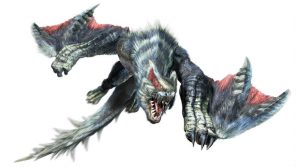 Monster Hunter 4 Ultimate was the most story-driven of the entire series, so it’s a bit disappointing to find out that story elements weren’t given the same treatment in Monster Hunter Generations. The thin story revolves around four supremely formidable beasts (called the Fated Four) that are tormenting the lives of villagers in Bherna, and three other locations you’ll visit along your journey. While that’s basically it in terms of story, the neat thing is that the other villages you travel to are actually the central hub areas from past Monster Hunter games—Kokoto Village, Pokke Village, and Yukumo Village. For long-time fans who have been playing since the PlayStation Portable days, Monster Hunter Generations offers an inviting trip through memory lane, and for Nintendo gamers who have recently discovered the series, you get a chance to visit iconic Monster Hunterareas from yesteryear for the very first time. While it still would have been nice to see Capcom tell a better story here, with so many returning villages, characters, hunting locations, and monsters, this game is all about fan-service and nostalgia—more akin to a greatest hits compilation than it is a full-fledged new adventure.
Monster Hunter 4 Ultimate was the most story-driven of the entire series, so it’s a bit disappointing to find out that story elements weren’t given the same treatment in Monster Hunter Generations. The thin story revolves around four supremely formidable beasts (called the Fated Four) that are tormenting the lives of villagers in Bherna, and three other locations you’ll visit along your journey. While that’s basically it in terms of story, the neat thing is that the other villages you travel to are actually the central hub areas from past Monster Hunter games—Kokoto Village, Pokke Village, and Yukumo Village. For long-time fans who have been playing since the PlayStation Portable days, Monster Hunter Generations offers an inviting trip through memory lane, and for Nintendo gamers who have recently discovered the series, you get a chance to visit iconic Monster Hunterareas from yesteryear for the very first time. While it still would have been nice to see Capcom tell a better story here, with so many returning villages, characters, hunting locations, and monsters, this game is all about fan-service and nostalgia—more akin to a greatest hits compilation than it is a full-fledged new adventure.
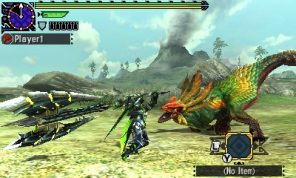 Most hunter customization options ever
Most hunter customization options ever
Past Monster Hunter games have boasted about their inclusion of all-new weapons with unique play styles and specialties, but this latest game takes a different approach. All 14 weapons from its predecessor are back—including Blademaster type weapons like the Great Sword, Hammer, and Lance, and Gunner type weapons like the Bow and Heavy Bowgun—only this time each can be personalized by choosing from four different “Hunting Styles.”
For those who prefer traditional Monster Hunter gameplay, the Guild Style will be your go-to style with its standard, balanced gameplay. If you want more flair with your attacks, picking the Aerial Style will enable you to leap high into the air and perform new moves, as well as more easily mount monsters. Hard hitters can opt for the Striker Style, which simplifies controls and lets you equip the most Hunter Arts (more on that later). Finally, advanced players will likely gravitate towards the Adept Style that rewards last-minute dodges with instant counterattack and string combo possibilities. Hunter Styles add significant depth to the gameplay and open up a huge number of customization options, letting everyone have fun discovering new winning combinations and personalizing their hunter based on their own preferred play styles. Capcom even went the extra mile by building unique training missions for each Weapon + Hunting Style mix, for a total of 56 weapon practice quests alone.
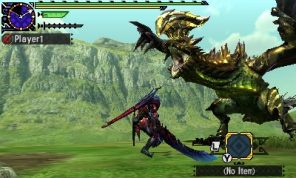 The art of war
The art of war
Another major new gameplay addition in Monster Hunter Generations are Hunter Arts. These flashy, powerful maneuvers come in two basic forms: universally equippable defensive moves and weapon-specific moves. Between 1-3 arts can be held based on your chosen Style (e.g. Striker gets 3 arts slots, whereas Adept only gets 1 slot), and they charge up as you attack monsters. Once an arts’ meter bar is full, you can unleash it by tapping a panel on the Nintendo 3DS touch screen, or advanced players may prefer to initiate them using button combinations.
I’m impressed with how visually stunning Hunter Arts are, and it’s nice to see Capcom evolving the franchise’s core gameplay that has remained far too static over the years. In an odd, yet thoroughly enjoyable twist, some of the weapon-specific arts mimic special attacks from certain Street Fighter characters, such as the Shoryugeki “rising shield” maneuver, along with a variety of familiar spin and evasive moves. When you factor in Monster Hunter Generation’s dozen-plus weapons, four different styles, and tons of equippable arts, there’s an unprecedented level of customization options to fiddle with—all of which enhance/evolve the core gameplay in meaningful ways.
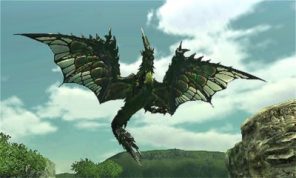 Go on the prowl
Go on the prowl
For the first time ever, in Monster Hunter Generations you can directly control you faithful Felyne companions in battle. Previously, these cat-like creatures could only join your hunter in battle as non-playable, A.I.-controlled Palicoes; now, you’re able to play as them directly in the all-new Prowler Mode. Prowlers are not as tough as their hunter counterparts, but have several advantages such as unlimited stamina, significantly faster gathering, and a supply of health-replenishing Acorns that allow them to rejoin the battle immediately after fainting. They can also throw boomerangs to damage monsters, and have their own set of unique skills to enhance their offensive prowess. I love how Prowlers offer a whole new approach to Monster Hunters, and while they may be better suited to gathering quests vs. combat quests, having the choice to play as them, or as a Hunter, adds even more variety. Plus, Prowlers even have their own list of optional quests you can choose to take on.
In tandem with the ability to play as Prowlers, there’s an expand array of facilities and services available to support your Felyne friends. The hub world of Bherna contains a full sub-area called the Palico Ranch, filled with interesting characters like the “Meowstress” who will scout for new Palicoes based on your exact preferences, and facilities like the Palico Dojo where you can teach Palicoes new skills or undertake special training to have them gain experience. These expanded Palico services are more incremental than a major expansion, despite this though it’s excellent to see Capcom placing greater emphasis on your furry companions.
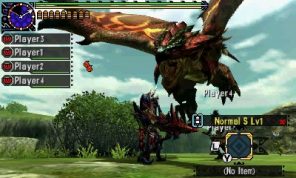 Better together
Better together
Dedicated monster hunters know that tackling quests as a team can be even more fun. Monster Hunter Generations gives you the ability to join up online with up to three other hunters, or meet-up in person and play together via Local Play. From my experience, visiting the main Hunters Hub and finding other players is a snap, and battling fearsome monsters as a group is a total blast. Multiplayer has its own special Arena Quests and a separate quest ranking system separate from the main game.
Another cool social aspect is the inclusion of “Deviant Monster Quests,” which require you to StreetPass other players to collect tickets used to access them. These missions feature powerful enemies like the Dreadqueen Rathian and Grimclaw Tigrex that have survived past encounters, and are back with completely new attacks, movement patterns, and abilities. Revisiting familiar monsters that now require new approaches to defeat is challenging and exciting, especially for those who remember taking on these terrifying beasts in past Monster Hunter games.
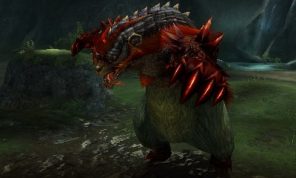 Final Thoughts
Final Thoughts
Monster Hunter Generations is a superb addition to the franchise, offering well over 100 hours of action-packed questing and the biggest evolution in gameplay yet. The game is a clear homage to the past ten years of Monster Hunter, eschewing an in-depth story in favour of revisiting iconic locations, characters, and monsters from previous hunts. Long-time fans will love this nostalgic trip down memory lane, while newcomers will get to experience the series’ rich history with all the latest graphics and gameplay innovations. Whether you’re a Monster Hunter veteran, or going out on your very first hunt, you’ll thoroughly enjoy this newest adventure.
+ Styles and Arts are great gameplay additions
+ Nice tribute to the Monster Hunter series
+ Huge journey that will take over 100 hours to complete
+ Can finally play at Palicoes
– Story is minimal
– Carries over a lot from MH4 Ultimate
– Still has a learning curve
OVERALL
Gameplay: 4.5/5
Graphics: 4.5/5
Sound: 3.5/5
Lasting Appeal/Replayability: 5/5
Overall Rating 4.4/5 (88%)



